“What’s the best time to send email?” is one of the most popular email marketing questions. Should I send email Monday, or Tuesday? Should it be 11am or 4pm? I’ve reviewed several data studies to come up with the ultimate answer. It might surprise you.
Google trends for the phrase ‘email best time to send’ shows continuous growth.
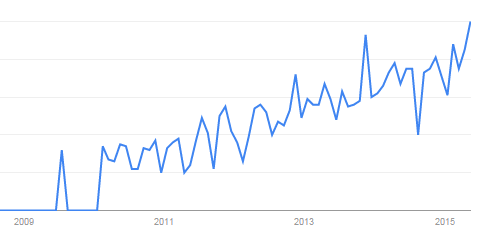
And there is no shortage of advice. All it needs is some seriously big data and voilà, the question answered once and for all. Or not?
The best day of week to send
Lots of email companies with large databases of campaigns stats have published results. What can we learn from the best days for increased email open rates?
SendInBlue found in their data that Saturday is the best for open rate, the black line. Though of course fewer brands send, the green bars.

GetResponse identified sending on Tuesday as the best day to send email for open rate.
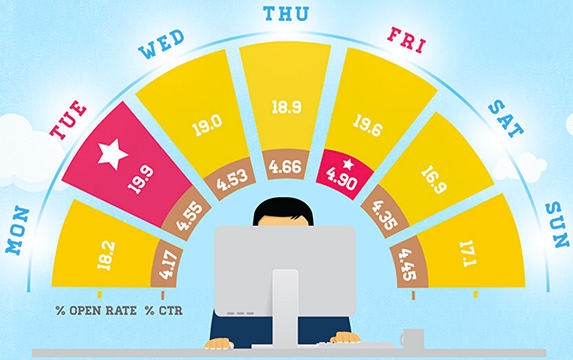
Omnisend took data from 791 million emails to conclude the best day is Wednesday
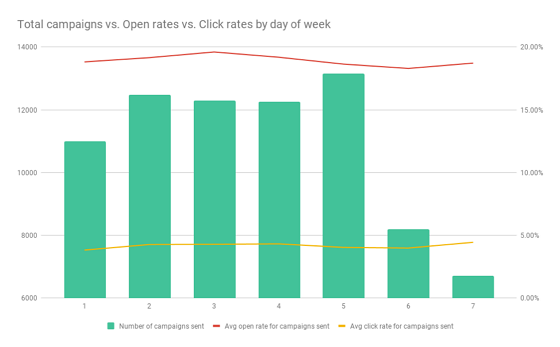
And further data from Omnisend shows the best day for conversion is Wednesday

MailChimp data points to Thursday to send your email campaigns for highest open rate

MailerMailer found Tuesday and Wednesday tie for the best open rate at 10.7%. Their report is no longer available since the company was acquired in 2017 but here’s what it showed.
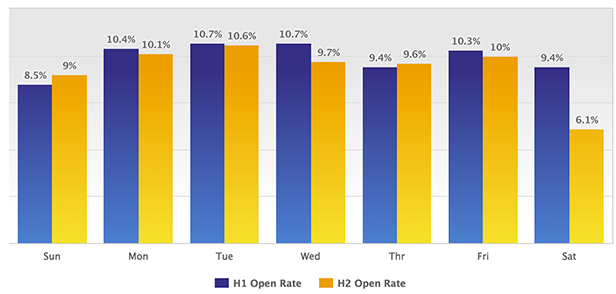
Send time of day advice is mixed too, in this infographic sending email campaigns before 9am is said to be ‘like throwing emails into a black hole’ whereas this analysis shows between 8am and 9am delivers a peak and Omnisend say 8am, 1pm or 4pm to 5pm – see chart below
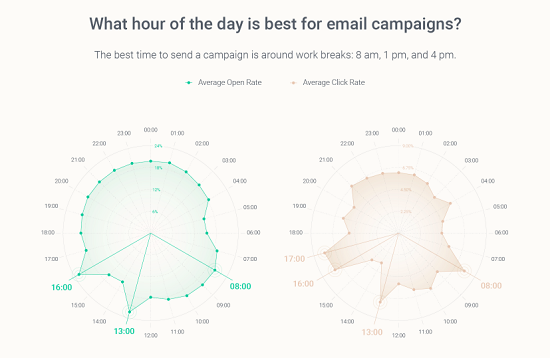
And if you start looking at the best day for email click rate it’s a whole new set of answers.
The big data analysis is very contradictory.
How can this be?
It’s the wrong question to ask!
There is no generic best time to send. Every brand and even different types of message for the same brand can have a different best time.
Even that assumes the exact time of send is important anyway. With on average 53% of emails opened on mobile devices, email is now an always on 24-7 connected channel.
Unlike Tweets and most other Social or electronic messages, an email sticks around in your inbox and doesn’t scroll past in seconds to be forgotten.
In the past I’ve run send time split tests. The difference for brands I’ve run tests for is marginal. The reports mentioned at the start do have one thing in common, the difference between different weekdays is small. The only really big and consistnet difference is weekends vs weekdays.
In my send time split tests I’ve seen a 2% or 3% uplift in clicks, which means a 6% click rate, might be improved to 6.18%. A percentage point increase of 0.18%, unlikely to wow the CEO.
How to determine your best time and day
If you believe your audience is likely to be time of day sensitive and your list size makes a small click rate increase attractive then the way to determine your best send time is through split test, not by using some generic average time.
Typically this means splitting your list into eight test cells and sending at times; 7am, 9am, 11am, 1pm, 2pm, 4pm, 6pm and 8pm.
For a 5% click uplift on a 6% click rate to be statistically significant you need each test cell to be 50,000 contacts. The implication is your list needs to be 400,000 strong to be able to run time optimization. Use a split test calculator to plan tests and check results for statistical significance. Try the free online split test calculator we provide here.
The test should be repeated over at least five campaigns to eliminate the effect of ‘new’. Initially a different send time might appear to be more beneficial as subscribers are woken up by simply the change and not because of an inherently better time.
Running five campaigns with the above scheme means a total broadcast volume of 2 million is used for this optimization.
The question is this; What else could you have done with the time, resource and email volume spent running the time tests? For example subject line testing is more likely to provide a better uplift, wouldn’t it be better to invest in that than time of day?
Or how about putting the resource into sorting out some trigger emails? Marketing is about prioritizing resource and not being distracted by low value opportunities.
I turned to a couple of seasoned email experts to get their views too. Here’s what they said.
“One (among many) of the problems with this question is that it stems from a past era (15 years ago …) when brands thought in terms of sending monthly or weekly emails. Therefore trying to find the “right time” to send (Tuesday at 10 am) for all subscribers was a somewhat reasonable question.
Since most brands send multiple emails per week or day, including emails triggered in real-time based on each individual’s behaviour, (and of course, don’t forget that many people check email on their mobile device dozens of time per day) this is a question that should probably be retired … unless you still only send one email a month…”
Loren McDonald, Silverpop/IBM, @lorenmcdonald
“The best time for some email is when it’s expected, the best time for others is when it’s not. Focus more on what you send than when you send; you’ll make more money.”
John Caldwell, Red Pill Email, @jacaldwell
What you should do instead
Apply some common sense based on knowledge of your audience and the type of message. Take a look at your web analytics search, direct and PPC traffic. Use that as a guide to a good time and day to send, move on, knowing you are at a sensible optimum.
Some email service providers provide automatic send time optimization and there are add-on vendors too for this feature. This works by keeping track of when each subscriber opens and then sends to each individual at their own best time.
This reduces the cost of time optimization to a single tick box, in which case tick it and see if it helps. How much this helps is brand dependent, some brands see a benefit and some don’t. Remember personalized send time may not always make sense, such as when you’ve sales cut off times or flash sales.
This type of technology can be helpful when campaigning across multiple time zones, since it avoids the need to know each subscribers time zone and having to segment on time zone.
Just for fun
Next time you are talking to an email expert ask them the best time to send. If they tell you Tuesday 10am, or definitive answer of any sort, then thank them very much and walk away before your results get hurt by their other pearls of wisdom.
